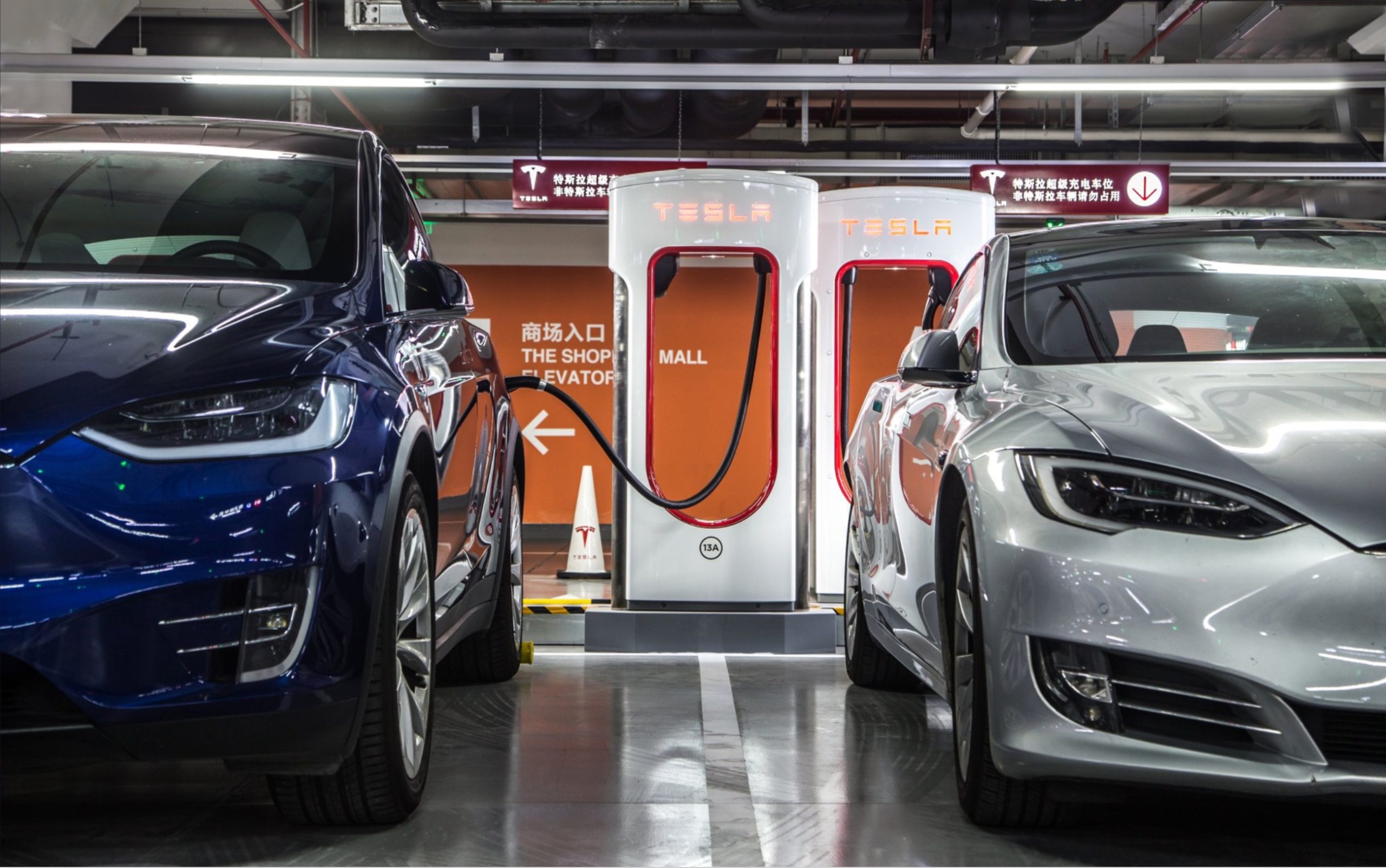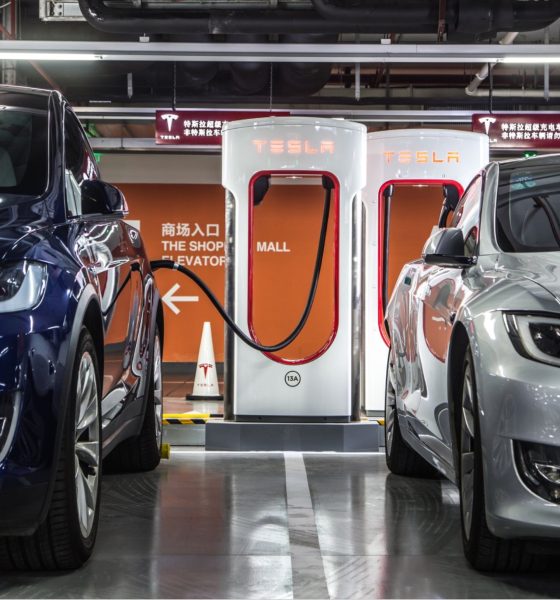

Investor's Corner
Tesla’s China factory plans see progress as gov’t lifts ownership restrictions
Tesla’s plans of establishing a China factory recently made significant progress, after the Asian country’s state planner announced that it is lifting ownership restrictions for foreign-owned facilities. According to the local agency that oversees industries on Tuesday, the ownership limitations for companies like Tesla will be lifting as soon as this year.
With the promise of lighter tariffs and sole ownership of its China factory, Tesla now stands to operate in the Asian country without a handicap, with its vehicles likely giving local electric car manufacturers some competition, according to a Bloomberg report. In a statement to the publication, Dan Zhuang, an analyst at Rhb Osk Securities Hong Kong Ltd., noted that Tesla’s China factory would likely affect the country’s electric car market overall, with leading local companies such as BYD set to feel some pressure.
“The pace of the open-up is much faster than the market had thought. If Tesla produces from China, BYD may face the pressure to lower price and thus a weaker margin,” Zhuang said.
The announcement comes a week after President Xi Jinping declared in a business conference that the country would be cutting import taxes for vehicles that are brought over from abroad. According to the president, Beijing will aim to “significantly” lower its tariffs on auto imports and ease restrictions imposed on foreign companies.
Tesla CEO Elon Musk, who previously addressed the rather unfair system for American automakers in the country on Twitter, welcomed Xi’s announcement last week, stating that it was a “very important action” by China. According to Musk, such a decision will “benefit all countries.”
China’s decision to lift ownership restrictions stand to benefit the American electric car maker. Tesla, after all, has been engaged in discussions with the Shanghai municipal government for quite some time. During Tesla’s third-quarter earnings call last year, Musk stated that the local facility would serve as a means for the company to produce vehicles that would be sold to the local market.
According to Musk, the planned Shanghai facility will not be manufacturing the company’s flagship vehicles — the Model S and the Model X. Instead, it would likely produce its lower-priced vehicles — the Model Y — and some of the Model 3.
“[Tesla] won’t be making Model S and Model X, but we’ll be making probably Model 3, probably Model Y primarily for the local Chinese market and it’s really the only way to make the cars affordable in China,” Musk said.
Earlier this year, reports emerged stating that discussions between Tesla and Shanghai officials have soured due to disagreements about the ownership of the planned facility. According to individuals who claimed to be privy to Tesla and the government’s dealings, Tesla wants to hold sole proprietorship of the factory, but Chinese regulators were reportedly firm on the idea that foreign automakers must engage in a joint venture with a local company.
Not long after these reports emerged, however, Shanghai officials stated that the discussions between the Elon Musk-led company and the municipal government have been progressing well. In an emailed statement to Reuters, Shanghai officials noted that both the government and the electric car company maintain a “shared goal” to build and operate the factory.

Investor's Corner
Tesla stock closes at all-time high on heels of Robotaxi progress

Tesla stock (NASDAQ: TSLA) closed at an all-time high on Tuesday, jumping over 3 percent during the day and finishing at $489.88.
The price beats the previous record close, which was $479.86.
Shares have had a crazy year, dipping more than 40 percent from the start of the year. The stock then started to recover once again around late April, when its price started to climb back up from the low $200 level.
This week, Tesla started to climb toward its highest levels ever, as it was revealed on Sunday that the company was testing driverless Robotaxis in Austin. The spike in value pushed the company’s valuation to $1.63 trillion.
Tesla Robotaxi goes driverless as Musk confirms Safety Monitor removal testing
It is the seventh-most valuable company on the market currently, trailing Nvidia, Apple, Alphabet (Google), Microsoft, Amazon, and Meta.
Shares closed up $14.57 today, up over 3 percent.
The stock has gone through a lot this year, as previously mentioned. Shares tumbled in Q1 due to CEO Elon Musk’s involvement with the Department of Government Efficiency (DOGE), which pulled his attention away from his companies and left a major overhang on their valuations.
However, things started to rebound halfway through the year, and as the government started to phase out the $7,500 tax credit, demand spiked as consumers tried to take advantage of it.
Q3 deliveries were the highest in company history, and Tesla responded to the loss of the tax credit with the launch of the Model 3 and Model Y Standard.
Additionally, analysts have announced high expectations this week for the company on Wall Street as Robotaxi continues to be the focus. With autonomy within Tesla’s sights, things are moving in the direction of Robotaxi being a major catalyst for growth on the Street in the coming year.
Elon Musk
Tesla needs to come through on this one Robotaxi metric, analyst says
“We think the key focus from here will be how fast Tesla can scale driverless operations (including if Tesla’s approach to software/hardware allows it to scale significantly faster than competitors, as the company has argued), and on profitability.”

Tesla needs to come through on this one Robotaxi metric, Mark Delaney of Goldman Sachs says.
Tesla is in the process of rolling out its Robotaxi platform to areas outside of Austin and the California Bay Area. It has plans to launch in five additional cities, including Houston, Dallas, Miami, Las Vegas, and Phoenix.
However, the company’s expansion is not what the focus needs to be, according to Delaney. It’s the speed of deployment.
The analyst said:
“We think the key focus from here will be how fast Tesla can scale driverless operations (including if Tesla’s approach to software/hardware allows it to scale significantly faster than competitors, as the company has argued), and on profitability.”
Profitability will come as the Robotaxi fleet expands. Making that money will be dependent on when Tesla can initiate rides in more areas, giving more customers access to the program.
There are some additional things that the company needs to make happen ahead of the major Robotaxi expansion, one of those things is launching driverless rides in Austin, the first city in which it launched the program.
This week, Tesla started testing driverless Robotaxi rides in Austin, as two different Model Y units were spotted with no occupants, a huge step in the company’s plans for the ride-sharing platform.
Tesla Robotaxi goes driverless as Musk confirms Safety Monitor removal testing
CEO Elon Musk has been hoping to remove Safety Monitors from Robotaxis in Austin for several months, first mentioning the plan to have them out by the end of 2025 in September. He confirmed on Sunday that Tesla had officially removed vehicle occupants and started testing truly unsupervised rides.
Although Safety Monitors in Austin have been sitting in the passenger’s seat, they have still had the ability to override things in case of an emergency. After all, the ultimate goal was safety and avoiding any accidents or injuries.
Goldman Sachs reiterated its ‘Neutral’ rating and its $400 price target. Delaney said, “Tesla is making progress with its autonomous technology,” and recent developments make it evident that this is true.
Investor's Corner
Tesla gets bold Robotaxi prediction from Wall Street firm
Last week, Andrew Percoco took over Tesla analysis for Morgan Stanley from Adam Jonas, who covered the stock for years. Percoco seems to be less optimistic and bullish on Tesla shares, while still being fair and balanced in his analysis.

Tesla (NASDAQ: TSLA) received a bold Robotaxi prediction from Morgan Stanley, which anticipates a dramatic increase in the size of the company’s autonomous ride-hailing suite in the coming years.
Last week, Andrew Percoco took over Tesla analysis for Morgan Stanley from Adam Jonas, who covered the stock for years. Percoco seems to be less optimistic and bullish on Tesla shares, while still being fair and balanced in his analysis.
Percoco dug into the Robotaxi fleet and its expansion in the coming years in his latest note, released on Tuesday. The firm expects Tesla to increase the Robotaxi fleet size to 1,000 vehicles in 2026. However, that’s small-scale compared to what they expect from Tesla in a decade.
Tesla expands Robotaxi app access once again, this time on a global scale
By 2035, Morgan Stanley believes there will be one million Robotaxis on the road across multiple cities, a major jump and a considerable fleet size. We assume this means the fleet of vehicles Tesla will operate internally, and not including passenger-owned vehicles that could be added through software updates.
He also listed three specific catalysts that investors should pay attention to, as these will represent the company being on track to achieve its Robotaxi dreams:
- Opening Robotaxi to the public without a Safety Monitor. Timing is unclear, but it appears that Tesla is getting closer by the day.
- Improvement in safety metrics without the Safety Monitor. Tesla’s ability to improve its safety metrics as it scales miles driven without the Safety Monitor is imperative as it looks to scale in new states and cities in 2026.
- Cybercab start of production, targeted for April 2026. Tesla’s Cybercab is a purpose-built vehicle (no steering wheel or pedals, only two seats) that is expected to be produced through its state-of-the-art unboxed manufacturing process, offering further cost reductions and thus accelerating adoption over time.
Robotaxi stands to be one of Tesla’s most significant revenue contributors, especially as the company plans to continue expanding its ride-hailing service across the world in the coming years.
Its current deployment strategy is controlled and conservative to avoid any drastic and potentially program-ruining incidents.
So far, the program, which is active in Austin and the California Bay Area, has been widely successful.








